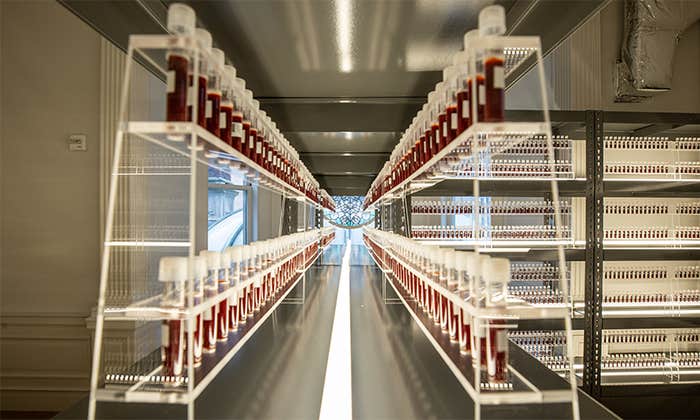
When you think of fame, you probably picture Hollywood A-listers, big-time political players, or triumphant athletes, the people who routinely see photos of themselves when they glance at magazine and newspapers. But we are each of us an exemplar of the biology of fame. Consider some recent scientific findings regarding the substantial genetic uniqueness packed into tiny individual sperm.
Although most of the billions of sperm cells in a single semen sample look characteristically the same, the great variance possible between siblings has long suggested that that one sperm is not just as good as another. Twentieth-century geneticists gave some technical backing to this observation by showing that during meiosis, the process of creating a sperm’s genome, the new cell’s DNA undergoes important changes: It can spontaneously mutate, and it becomes a blend of all four grandparents, with the genetic material recombining in new ways. But they never knew how much this recombination actually scrambled the genomes of new sperm—it was impossible to test because no one could sequence the DNA in a single cell; all of the known techniques required using many cells, and couldn’t determine the sequence in any one of them.
Now new single-cell DNA-sequencing methods used by researchers at both Stanford and Harvard Universities has made it possible to compare individual male reproductive cells and measure the differences between each one.
After a decade of work, Stephen Quake, Jianbin Wang, and colleagues at Stanford published their research in the journal Cell last year. The researchers sequenced the genomes of 91 human sperm from one sample from a single donor. By comparing the 1.2 million “letters” in each sperm’s genome, Wang and his colleagues found that individual sperm differed greatly due to an average of 23 recombinations in each cell, though the number of recombinations and mutations varied dramatically between them. Two of the 91 sperm were even missing entire chromosomes, a major error that usually is fatal to a growing fetus.
In a separate project, Sunney Xie and colleagues at Harvard University developed a technique called multiple annealing and looping-based amplification cycles (MALBAC) that also lets them analyze genomes in single cells. In their study published in Science last December, they used MALBAC to sequence 99 sperm from one donor. As in the Stanford study, they saw lots of genetic scrambling, like recombined genetic material and major chromosomal errors, including deletion of big chunks of genome.
They found that individual sperm differed greatly due to an average of 23 recombinations in each cell, though the number of recombinations and mutations varied dramatically between them.
Before the advent of single-sperm sequencing, researchers only had populations studies to assess the genetic mixing of sperm and egg. Single-sperm sequencing now allows for study of recombination and mutation in detail. Both groups say the techniques could be used improve our understanding of infertility: Researchers might be able to look at the mutation rate of sperm for a patient and see if there are factors that interfere with his reproductive success. What has emerged from the new studies is the discovery of a world of naturally occurring genetic variation in each potential human being.
The old idea that there is something unique to every individual is true. This uniqueness of humans starts early, with the sperm that has the ability to stand out from the crowd. (Egg cells also possess significant genetic variation, but they’re much harder to gather and study.) Only the winner, one specific energetic sperm, against all the swimming odds, has what it takes to fertilize the egg.
In fertilizing an egg, the sperm attains an impressive level of fame: Its DNA—the crucial information that defines that sperm, that links it to an ancient, genetic ancestral line—will be replicated trillions of times over to assemble each cell and build a person. Without that one sperm cell’s unique genetic instruction, each of us would not be the optimal person we are. People who embrace their uniqueness and work to make it known may be the famous among us, but our very existence means we are the winners of the Darwinian fame game.
Gayil Nalls, Ph.D, is an interdisciplinary artist, philosopher, and theorist. Her work investigates personal and collective sensory experiences, memory, and identity.


























